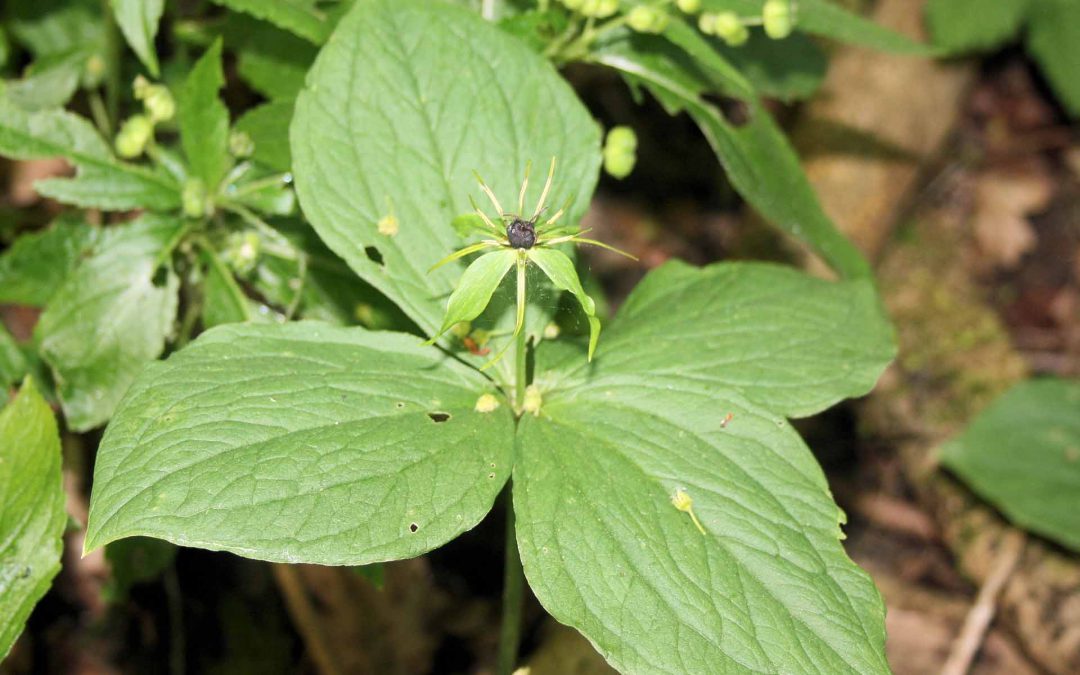RNHS visit to Prior’s Coppice 5th October 2019
Under greyish skies but before the forecast rain arrived about 16 members met with Andy Lear for a walk around this LRWT reserve to learn something about the management of the wood and about its flora and fauna. After a lot of recent rain the paths were wet and somewhat boggy but we still had an enjoyable and interesting walk.
The wood is a remnant of the Royal Leighfield Forest situated, on a hillside, on chalk boulder clay for the most part but with a more acid soil lower down. This is well demonstrated by the flora, dog’s mercury on the alkaline soil, wood sorrel on the more acid area. There are a many of ash trees in the more alkaline part lots of them now subject to ash die-back, even the mature trees which are now about 70 years old. The majority of these trees were probably self-seeded after clear felling in the Forties, so there is not much genetic variation amongst them.
Management of the wood aims to maintain the rides, but not to widen them, so as to leave shrubby areas for summer birds, to coppice areas to create a balance between more shaded and more open areas and to thin out some of the more mature trees especially in the area of ash trees so as to allow self-regeneration, mostly with oak and hazel. There does not seem to be much damage caused by deer eating the young saplings; Andy suggested that the numerous hares cause more destruction than deer. Most of the diseased ash will be left to collapse and rot over time; the timber has no commercial value and the rotting trunks provide shelter and food for many different species.
Andy showed us one or two of the more unusual trees and plants as we walked round. There is a large Black Poplar, a native tree but uncommon in the area, which he had discovered had been planted rather than occurred naturally, and further on a Goat Willow, a large and more mature tree than the usual bush-like examples around. There are a few native Crab Apple trees, an Italian Black Poplar, quite unlike the native tree and a stand of Wild Cherry. We also passed at least one Wych Elm. Much more numerous are Oak, Hazel, Field Maple, Hawthorn and an understory of Guelder Rose, Dogwood and much Bramble. He also pointed out to us Spurge Laurel, an epiphytic fern and a Hardshield fern. Guy Messenger , in his Flora of Rutland, says he only found one such plant in the whole wood whilst Andy has counted now at least 50 plants. We didn’t go to find the specimens of Herb Paris which still grows in one part of the wood, but only in the one spot.
There were one or two plants still in flower, Creeping Buttercup, Red Campion, Herb Robert, Hogweed and Nipplewort, but there is much Dog’s Mercury, Barren Strawberry, Wild Raspberry, Wood Sorrel, Meadowsweet, Spear and Marsh Thistle and Horsetail. Water Horsetail was seen in the small pond near the entrance, a rather uncommon plant in Rutland these days. We also found a few frogs, and heard Marsh Tit, Nuthatch, Raven and saw Red Kite and Brown Hare. There were many different Fungi, but nobody amongst us was confident in naming them
We were all grateful to Andy for an interesting afternoon’s walk.
